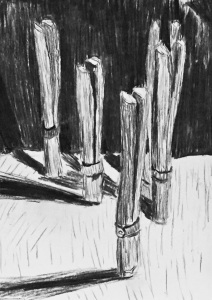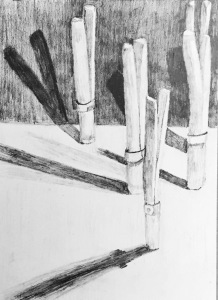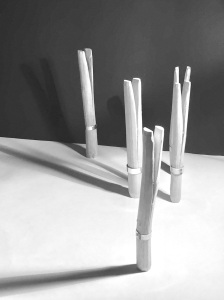Intent
In this cycle I’m shifting focus to studies using line over tone. That is:
- Using line over tonal blocks to represent the image;
- To convey a strong impression of the scene;
- To convey texture using line;
This is a bit more of a stretch, as my line work has left something to be desired over time. I’ve included it at this stage because I suspect that it is an area where improvement would lead to benefits elsewhere.
Continue reading “Cycle 2: Line study”




























































